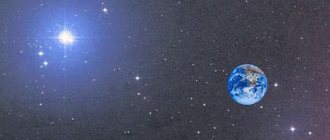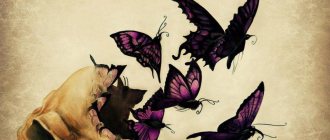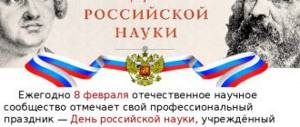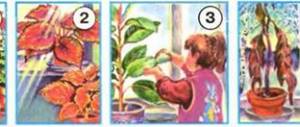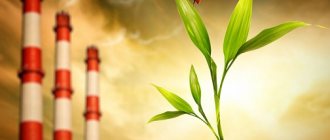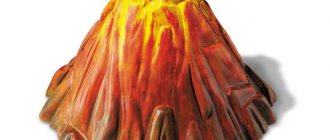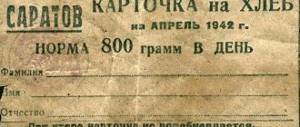A workbook for the first part of the workbook about the world around us according to the Perspective program for the second grade. The authors of the workbook are A.A. Pleshakov and M.Yu. Novitskaya. New workbook for the 2020 school year (white with a bird on the cover).
In the workbook on a printed basis, the tasks are not difficult, mostly the answers to them are in the textbook “The world around us” for grade 2, part of the notebook corresponds to part of the textbook. Problems can only arise when the school gave you old textbooks, but you purchased new notebooks; a discrepancy may result. In any case, if you have questions about how to do your homework, check out our GDZ at 7 Guru.
Pleshakov and Novitskaya’s notebooks often contain tasks to search for information in encyclopedias and the Internet, and to compose a presentation or report. Our GDZ also has all this in ready-made form. You can change the pictures a little so that there are no repetitions if classmates use the same GDZ (which is very likely).
Read the assignments carefully, some of them ask for personal information (about your city of residence, family, etc.), we, of course, cannot answer such questions for you, we can only give an example of the format. Answer such questions yourself.
As you probably already understood, you cannot do without a printer, at least a monochrome one, because there are many tasks in the notebook to print a picture or photo.
All answers have been checked and approved by a primary school teacher.
GDZ for part 1 of the workbook the world around us, grade 2
A workbook for the first part of the workbook about the world around us according to the Perspective program for the second grade. The authors of the workbook are A.A. Pleshakov and M.Yu. Novitskaya. New workbook for the 2020 school year (white with a bird on the cover).
In the workbook on a printed basis, the tasks are not difficult, mostly the answers to them are in the textbook “The world around us” for grade 2, part of the notebook corresponds to part of the textbook. Problems can only arise when the school gave you old textbooks, but you purchased new notebooks; a discrepancy may result. In any case, if you have questions about how to do your homework, check out our GDZ at 7 Guru.
Pleshakov and Novitskaya’s notebooks often contain tasks to search for information in encyclopedias and the Internet, and to compose a presentation or report. Our GDZ also has all this in ready-made form. You can change the pictures a little so that there are no repetitions if classmates use the same GDZ (which is very likely).
Read the assignments carefully, some of them ask for personal information (about your city of residence, family, etc.), we, of course, cannot answer such questions for you, we can only give an example of the format. Answer such questions yourself.
As you probably already understood, you cannot do without a printer, at least a monochrome one, because there are many tasks in the notebook to print a picture or photo.
All answers have been checked and approved by a primary school teacher.
Summary of a lesson on the surrounding world in 1st grade
Rationale for choosing a topic
Human society has always needed, first of all, a healthy person. The culture of attitude towards one’s health is formed in every child, of course, in the family. But the school and the teacher also play an equally important role in its formation. Much depends on whether the attitude towards health is value-based and whether the skills to preserve and strengthen it are instilled in the future of the child’s life.
Therefore, one of the goals of my work is to educate students to take care of their health, the need for a healthy lifestyle, the desire for physical improvement, and the prevention of bad habits. It is necessary for younger schoolchildren to develop an understanding of the importance of health as the most important value of life.
I attach great importance to the lessons of the surrounding world. In these lessons, children learn the “art of listening” to their body and are attentive to their health. Teaching of the surrounding world is carried out according to the textbook by A.A. Pleshakov "The world around us". The textbook is divided into four blocks:
- What and who?
- How, where and where?
- Where and when?
- Why and why?
The main goal of the course is to teach children to ask questions about the world around them and find answers to them. This lesson is part of the system of lessons on the topic “Why and Why?” With the help of various tasks, children must understand and understand: why we sleep at night, answer the problematic question: what needs to be done to ensure that our sleep is healthy?
Using the material from this lesson, I tried to awaken in children curiosity, insight, the ability to observe, analyze, compare, and talk about their emotions and feelings. I think that the ability to empathize, sympathize, and be attentive to one’s health will help children in the future to love themselves and the world around them.
I hope that the knowledge children gain in class will be remembered for a long time. And my students will take care of their health and the health of their loved ones.
Goals:
- To create favorable conditions for students to develop an understanding of sleep as an integral part of human health; find out the meaning of sleep in people's lives.
- To promote the development of the ability to reason, analyze, and draw conclusions.
- Foster curiosity and interest in reading additional literature about human health.
Lesson objectives:
- Help children understand the meaning of sleep in human life.
- Together with your children, develop rules for getting ready for bed.
- Show that not only people sleep, but also animals.
- Systematize children's ideas about the work of people working at night.
Equipment:
textbook “The World Around Us”, a printed workbook, colored pencils, a projector, a multimedia presentation in Power Point, phonograms of the songs “Bay-bye”, “Tired toys are sleeping”, “Nodding our heads”.
Expected results:
1. Understand that we sleep in order to relax and gain strength, learn how to behave correctly before bed. 2. Using the acquired knowledge in everyday life. 3. Positive emotional attitude. 4. Organization of work with the greatest effect to preserve and strengthen health.
DURING THE CLASSES
I. Creating a positive emotional mood in the classroom
– Hello, dear friends! I say “hello” to you, which means that I wish you all health! Have you ever thought about why greeting people involves wishing each other health? Probably because. That health is the most important value for a person. – Today we have an unusual lesson. What do you expect from him? (Children express their guesses)
- Thank you. I am very pleased to hear such words from you. I wish that your wishes come true, and that you actually learn something new for yourself and find answers to the questions that concern you.
II. Lesson topic message
– And today we will deduce a piece of the formula for health, and you will determine which one exactly. – Sit more comfortably, relax. And, immersed in your emotional state, try to imagine the topic of the lesson.
The music of children's relaxation sounds - a lullaby. There is a presentation slide show with photographs of the coming night. Children view a multimedia presentation (slides 2-12)
– Guys, what feelings did you experience while listening to the music and viewing the slides? (Children's statements)
– What do you think is the topic of today’s lesson?
What we're going to talk? (Children's answers)
- Listen carefully to the riddle and name the answer.
He won’t knock or blurt out, but he’ll approach anyone. (This is a dream")
- Right. The topic of the lesson is “Healthy sleep.” (slide 13)
Sh. Updating knowledge, planning
– What would you like to know about this topic? (The teacher systematizes the children’s statements and writes on the board a plan for studying the topic, consisting of children’s questions)
(slide 14)
1. What is sleep? 2. Why do we wheeze at night? 3. What are the rules of sleep? 4. How do people find out about a dream? 5. How do animals sleep? 6. Who doesn't sleep at night?
IV. Learning new material
The sun has set behind the village, tits are sleeping, jays are sleeping. A mustachioed catfish sleeps in the river, The forest, the steppe, and the garden sleep, The herd sleeps, the shepherd and the dog... The dream took it to its country.
– Guys, your first question: what is sleep? Maybe someone already knows? Nowadays there is a lot of different literature, a large number of programs are broadcast - share your existing knowledge with your friends. (Children express their assumptions, the teacher generalizes)
– Sleep is one of the most important types of daily rest.
Without sufficient normal sleep, health is unthinkable. People have long noticed the very important role of sleep for human health, for the restoration of his physical and mental strength. Sleep is a state of rest and rest that occurs at certain intervals. - Guys, who will try to answer the question: why do we sleep at night? (Children's answers)
- So let's now try to figure out this issue together.
Listen carefully to one story. (Children listen, analyze)
- One boy decided to observe: what would happen if he went to bed on time one evening, and went to bed late the other evening. He recorded his observations in his personal diary. Here are his notes.
1 day.
In the evening I went to bed at 9 o'clock.
In the morning I woke up at 7 o’clock, did exercises and went to school in a good mood. I worked actively in class. Day 2.
I watched a movie on TV that ended at 11 pm.
I couldn't fall asleep right away. In the morning I didn’t want to wake up and go to school, I had a headache and was in a bad mood. I wanted to sleep in class. My eyes were stuck shut. Day 3.
Today I decided to go to bed on time, that is, at 9 pm. In the morning I woke up cheerful and cheerful and went to school. The lessons were very interesting.
– Guys, why do you think this could happen? Why do you need to sleep at night and go to bed on time? (Children express their opinions, prove) As a result of the discussion, the result of the work appears. (slide 15)
We sleep to: – rest; – be kind, cheerful and cheerful in the morning; - be a hero; - fly in a dream; – see interesting dreams; – play with “toons”.
- Right. Lack of sleep, especially systematically, leads to overwork and illness in the body. We like to watch interesting dreams: we fly in them and play with our favorite characters. – Look carefully at the illustration in the textbook. What happened to the boy in class? (Children's answers)
– Read the conclusion yourself.
(Children read in the textbook)
- Our sleep will be sound and awakening will be easy when we follow special rules for preparing for bed.
And just your third question, what are the rules for healthy sleep? How do you get ready for bed? (Children's statements)
- Let's develop these rules together now.
You need to complete the task at the bottom of the textbook. Analyze the pictures yourself and paint the chips with different colors: what you need to do before going to bed - in green, what you can do - in yellow, what you can’t do - in red. (Children's independent work)
- Please, now work in pairs.
Tell each other about your conclusions and discuss controversial situations. (Work in pairs)
- Guys, check the result of your work on the slide. In your opinion, is everything done correctly here? (Slide 16)
(Children analyze the presented answer option, correct mistakes, proving their choice)
– Scientists studying the effect of sleep on humans have also developed rules that should be followed. Look carefully and tell me what we haven’t noted in our rules yet? (slide 17) – the teacher reads and comments on the rules.
Children's answers:
– I noted one more rule for myself: go to bed and get up at the same time. – It is advisable to sleep in complete darkness. – Sleep on a flat bed. – But I don’t understand: why do you need to sleep on your back or right side? - Guys, who can answer this question? “It’s probably more comfortable to sleep this way.” – I think that it’s easier for our heart to work this way; when we sleep, it should also rest. My mother told me that the heart is closer to the left side. And, if we sleep on the left side, then other organs will put pressure on it. - Well done! But let's leave this question open for today. When you come home, if you wish, ask your parents or look in books and try to find other answers. – Now let’s reinforce the rules of healthy sleep with the help of the active game “True or False?” If the statement is true, you fold your hands as if in a dream; if not, then clap your hands and knock your feet. (Work in progress)
Before going to bed you need:
– brush your teeth and wash your face; – jump and run; – ventilate the room; – watch a scary movie; - read a book; - eat well.
- Guys, remember, what words do you usually say to your parents and other family members when you go to bed? What do you hear in response? And what do these words mean? (Good night! Good sleep! Sweet dreams!)
– Now, while listening to a lullaby, draw your dream in your workbook. (slide 18)
(Children draw their dreams to the accompaniment of music)
- Look at what wonderful dreams you are watching! Who wants to comment on their work?
(If desired, students tell what they depict in the drawings)
- Guys, let's get back to our plan. The next question is how do people know about a dream? – Some people sleep so soundly that when they wake up in the morning, they forget everything. Others, on the contrary, remember and try to unravel their dreams. Now special books for explaining dreams - dream books - help with this. And if you are interested, remember your dream, and at home in the book you will find an explanation for it. Do you know how it became known that when we sleep, we constantly dream? Doctors managed to find out this using a device called an electrocephalograph. This is a device that receives and records brain signals. It has been discovered that the brain is constantly working during sleep. “It’s not just people who have dreams. Can you give examples that prove that animals dream too?
(Children share their observations of pets: if you watch a sleeping dog or cat, you can see that the animal sometimes twitches its paw in its sleep and makes some sounds)
- Let's rest a little.
(Physical education is conducted with musical accompaniment - slide 19)
– Your next question, how do animals sleep? Let's continue discussing your observations further. (Slides 20-24) – the teacher demonstrates the slides, the children watch a multimedia presentation. – Now guess the riddles and you will find out which animals do not sleep at night.
Flies all night, catches mice. And when it becomes light, he flies into the hollow to sleep. (Owl)
He doesn’t mind sleeping all day, But as soon as night comes, his bow will sing, calling a musician... (Cricket)
Sleeps during the day, hangs upside down, flies at night, gets food. (Bat)
Either it will go out or it will light up at night in the grove. Guess what his name is? Well, of course... (Firefly)
– Look at the illustration in the textbook. What do you know about these animals?
Children talk.
Result:
Not all animals sleep at night, since the night for many animals is the main time for obtaining food.
- Guys, the last question of our plan: who, besides animals, does not sleep at night? What do you suppose? – I think that people who are sick do not sleep. – I believe that these are people who travel and are on the road. – And I think these are the people who work at night. - Well done! You are thinking correctly. Watch the presentation slides depicting the jobs of people who work at night and explain the importance of these jobs. (slides 25-27)
(Children give facts, real-life incidents telling about the activities of firefighters, ambulance workers, and police at night)
V. Reflection. Performance evaluation
- Well, guys, pay attention to the questions that we asked at the beginning of the lesson. Let it be short, but we tried to find answers to them. Let's summarize the lesson. Everyone will continue the phrase for themselves... (slide 28)
VI. Final conversation
– So, our lesson has come to an end, in which we examined only a part of what can affect our health. Health is an invaluable happiness in the life of any person. Each of us wants to be strong and strong and never get sick. And, if we follow the rules of healthy sleep, then the coming day will be more fun and life will be easier.
VII. Recommendations for independent work
(optional choice)
- Guys, if you want, you can sketch the dream you had at night at home. You can tell your mom or friends how to properly prepare for bed in the evening. - Guys, today I want to praise you all. You did a good job! Thank you! (Slide 29)
Used Books:
1. The World of Childhood: Junior Schoolchild / ed. A. G. Khripkova, - M.: Pedagogy, 1981. 2. Grow healthy: Children's Encyclopedia / R. Rotenberg, - M.: Physical Culture and Sports, 1991. 3. Fairytale reference book of health. T. 2 / A. Lopatina, M.: Amrita - Rus, 2005. 4. What? For what? Why? The Big Book of Questions and Answers / trans. K. Mishina, A. Zykova, - M.: Eksmo, 2005. 5. I explore the world: Children's Encyclopedia: Medicine / comp. N. Yu. Buyanova, - M.: AST, 1998. 6. Internet resources.
GDZ for part 1 of the workbook the world around us, grade 2
Page 4-5
On pages 4-5, the answers directly depend on your region of residence; fill them in yourself using the sample on the scans.
6-7
Answers to pages 6-7. We are the inhabitants of the universe
1. Imagine that you are admiring the world around you. Draw two pictures...
We draw absolutely any landscape: be it urban or natural.
2. Write down the definition.
The Universe is the whole world: stars, planets, satellites.
3. Find out the celestial bodies from the description and write their names in the boxes.
Hot celestial bodies emitting light.
stars
Cold celestial bodies. Orbit the sun. They do not emit their own light.
planets
Cold celestial bodies. Orbit the planets.
satellites
4. Write the names of the planets...
Mercury, Venus, Earth, Mars, Jupiter, Saturn, Uranus, Neptune.
You can read more about the planets of the solar system here >>
8-9
Answers to pages 8-9. Our “spaceship” is Earth
1. How do you imagine the Earth - our “spaceship”? Draw.
The Earth from space looks like a blue ball. Don't forget about its satellite - the moon.
2. Fill in the blanks in the text:
The earth's surface that we see around us is called the horizon. The boundary of this surface is called the horizon line.
3. Mark the sides of the horizon on the diagrams.
Look at the GDZ scan or textbook.
4. Practical work “Komapas”.
We carry out according to plan.
10-11
4. 4. Complete it.
A compass is a device for determining the cardinal directions.
5. Solve the crossword puzzle
globe north pole south pole oceans continents
6. Identify the continents using their contours.
See the GDZ scan.
12-13
Answers to pages 12-13. Time
1. Come up with drawings-symbols indicating the past, present and future.
You can draw with symbols: baby - girl - woman hut - high-rise building - super-house horse - carriage - car
2. Time units in increasing order:
1 second 2 minute 3 hour 4 day 5 week 6 month 7 year
4. Complete it.
A watch is a device by which you can tell the time.
14-15
Answers to pages 14-15. Day and week
1. Draw a picture to accompany your fairytale explanation of day and night.
See scan.
3. Write down the definition using a textbook or yourself.
A day is the time it takes for the Earth to completely rotate around its axis. There are 24 hours in a day.
4. Days of the week in the correct sequence, starting with Monday.
1 Monday 2 Tuesday 3 Wednesday 4 Thursday 5 Friday 6 Saturday 7 Sunday
5. Remember the interesting events that happened in your family on Sunday...
On Sunday, our whole family went on a picnic to the river. We took a fishing rod, badminton and ball with us. We chose a picnic spot and set up a folding table. Dad set up the fishing rods. We played and had fun together. It's very nice to have a snack in the fresh air after fun games. We had a great time this Sunday.
16-17
Photos for the story:
You can post photos of what you did during the week and a photo of your pet that you were caring for.
18-19
Answers to pages 18-19. Month and year
2. Observation of the Moon. New Moon, Growing Moon, Full Moon, Aging Moon. Draw what the Moon looks like on different days.
See GDZ scan.
3. Picture for a fairy-tale explanation of the change in the appearance of the Moon.
The picture shows the Moon in the form of an apple. At first it is completely round. But every night a caterpillar crawls to the moon and bites off a piece. Because of this, the Moon changes its shape.
4. Write down the definition...
A year is the time it takes for the Earth to complete a revolution around the Sun. There are 365 days in a year.
5. Months in the correct sequence:
1 January 2 February 3 March 4 April 5 May 6 June 7 July 8 August 9 September 10 October 11 November 12 December
20-21
Answers to pages 20-21. Seasons
1. Drawings-symbols for the four seasons, starting with spring.
A sprout can be a symbol of spring, a flower for summer, an apple for autumn, and a snowflake for winter.
3. Picture for a fairy tale explanation of the changing seasons.
Every year a huge Firebird flies over the Earth. And when it flies close, hot summer comes. But as soon as she returns to her Thirtieth Planet, the Earth cools down and winter comes.
4. Write down the definition.
Natural phenomena are changes that occur in nature.
5. Examples of seasonal phenomena.
Spring phenomena: melting snow, ice drift on rivers, awakening of plants, drops, arrival of birds. Summer phenomena: flowers blooming, fruits ripening, heat, birds hatching chicks. Autumn phenomena: birds flying away, leaves falling, cold weather, some animals hibernate. Winter phenomena: snowfall, frost, blizzard, blizzard.
List of all natural phenomena in different seasons >>
22-23
Answers to pages 22-23. Weather
Practical work “Thermometer”
3. Write in numbers:
ten degrees of heat + 10° ten degrees of frost - 10° zero degrees 0° six degrees above zero + 6° six degrees below zero - 6°
5. Write down the definition.
A thermometer is a device that measures temperature.
24-25
2. What weather phenomena are shown in the photographs?
Rain, thunderstorm, hail, rainbow, snow, fog
4. Write down the definition using a textbook or yourself.
Weather is a combination of air temperature, cloudiness, precipitation, and wind.
26-27
Answers to pages 26-27. Calendar - keeper of time, guardian of memory
1. Consider how the tear-off calendar page is structured. Create a page for the “My Birthday” calendar.
On a free page you need to write your date of birth beautifully: date, month, year, day of the week.
2. Write the names of the seasons in the center of the calendar circle. Color it with suitable colors...
Spring is always associated with green, summer with red, autumn with yellow or orange, winter with blue.
4. Guess the riddles.
The days come and go - the calendar. Twelve brothers follow each other without passing each other for months.
28-29
Answers to pages 28-29. Red days of the calendar
1. Come up with a holiday sign. Draw it in a frame.
See photo.
2. Select and paste a photo of the celebration of one of the red days of the calendar.
Choose any holiday and print a suitable photo.
30-31
Answers to pages 30-31. Folk calendar
2. Write down the signs of the peoples of your region about the weather based on observations:
a) behind phenomena in the world of inanimate nature:
Clouds are floating high - good weather. Thunder in September foreshadows a warm autumn. The trees were covered with frost - a blizzard.
b) for plants:
If birch trees turn yellow from the top in autumn, next spring will be early, and if from below, then late. A lot of sap flows from the birch - for a rainy summer. If the water lily closes, it means rain.
c) the behavior of animals:
In autumn, birds fly low for a cold winter, high for a warm winter. Swallows fly low in summer - predicting rain. When a cat curls up in a ball at home, it means it's freezing.
By following the link you can select other signs: all signs of living and inanimate nature about the weather >>
4. Imagine that you live on a desert island. Come up with a device that will help you count days, weeks, months of the year. Draw a diagram of this device.
See photo. This is Robinson Crusoe's calendar. Every day he made one notch on the palm tree.
32-33
Answers to pages 32-33. Ecological calendar
1. Find in the textbook and write down the definition.
Ecology is a science that studies the connections between living and inanimate nature, nature and humans. Ecology teaches us to take care of the environment.
2. Draw a picture on the theme “Our Magical Green House.”
See photo.
3. Enter the dates of environmental days in the table. Come up with drawings-symbols.
See table on scan. Date Name January 11 All-Russian Day of Nature Reserves and National Parks March 22 World Water Day April 1 International Bird Day April 22 Earth Day June 5 World Environment Day October 4 International Animal Welfare Day
34-35
Photos for photo story:
36-37
Lesson summary on understanding the world on the topic Change of day and night (grade 1)
Topic: Change of day and night
Subject: Knowledge of the world
Main objectives of the lesson:
- Summarize knowledge about the purpose of the sun and the earth.
- Conduct group observations of natural phenomena.
- Carry out practical work with a globe and a map.
- Observe the Earth's changes.
- To form ideas about the globe as a model of the Earth, about the reasons for the change of day and night, and seasons.
- Continue to develop the skills to model objects and phenomena, summarize information and draw conclusions.
- To develop rational-logical, visual-figurative thinking and imagination of students.
- Learn to work in micro groups, creating a situation of success.
During the classes
1. Warm up.
2. Repetition.
Repetition of knowledge about the Sun and Earth.
1 student - a story about the sun.
Additional questions:
- What is nature?
- Name the signs of living nature.
2 student - a story about the earth.
- How to behave during a thunderstorm?
- Name the sense organs.
3rd student - a story about how people imagined the earth in ancient times.
- Name a proverb about health and cleanliness.
- How to take care of your eyes?
4 student - a story about the shape of the Earth.
- How to take care of your ears.
- Name objects of inanimate nature.
3. Updating knowledge.
Work from the book
— What is shown in the pictures?
—Have you observed such phenomena?
The dark night was replaced by morning, Transparent, washed with dew, The sun is getting higher and higher - now it’s day, And the evening is following it like a shadow.
-What is the poem about? Do you know why the change of day and night occurs?
On page 18, read the guys' arguments.
-Who do you agree with?
Guess the riddle:
He stands on one leg, twists and turns his head, shows us countries, rivers, mountains, oceans. (Globe.)
- What is a globe?
-What is the globe for?
Making models of globes from plasticine.
Reading the text on page 18.
Show the North and South Poles, the Equator, and the Northern and Southern Hemispheres on models.
Observation of the change of day and night on tellurium.
View the presentation “Change of day and night”
- Why does day follow night?
Working on a map with cards MORNING, DAY, EVENING, NIGHT. Place the cards on the map.
Physical education minute “Do this.”
4. Updating knowledge.
Solve the problem: what to take with you?
Lena and Misha are on winter break. Their parents send them on a trip. Misha is flying to Australia with his dad, and Masha is flying to St. Petersburg with her mom. Pack your bags with the things they need.
Children are offered a list of things: swimsuit, beach slippers, swimming trunks, sunglasses, sunscreen, shorts, T-shirt, coat, boots.
Children's answers are listened to:
Group 1: things for Lena. 2 groups: things for Misha.
— Is the set of things the same for Lena and Misha?
— Why did you get different bags?
— Why is it winter on Earth at the same time in St. Petersburg and summer in Australia?
- What don’t we know?
- What will we learn in class today?
5. Topic: Change of seasons.
Working with tellurium.
- Why do the seasons change?
6. Crossword.
The water turned into ice The bear stopped roaring: The bear fell into hibernation in the forest. Who can say, who knows, When this happens? (Winter.)
I open the buds into green leaves, dress the trees, water the crops. (Spring.)
I am woven from the heat, I carry the warmth with me, I warm the rivers, “Bathe!” - I invite you. (Summer.)
I bring the harvest, I sow the fields again, I send the birds to the south, I strip the trees. (Autumn.)
(Day of summer solstice, winter solstice, autumn and spring equinox.)
7. Work in workbooks.
Page 25, no. 13.
- How do you think? Are seasons like this everywhere?
Masha Petrova's story about the seasons.
The book from which the material was taken.
8. Summary.
Autumn.
Answers to pages 36-37. Autumn months.
1. In the first column, read aloud the names of the autumn months in the ancient Roman calendar. Compare their sound with the sound of modern Russian names for the autumn months. Write Russian names in the second column. Orally make a conclusion about their origin.
In the 2nd column we write from top to bottom:
September October November
Find out from your elders and write down in the third column the names of the autumn months in the languages of the people of your region.
In the 3rd column we write from top to bottom:
howler monkey
2. Write down the names of the autumn months in the language of the peoples of your region that are connected:
a) with the phenomena of inanimate nature: rain bell, howler, mudbird, gloomy, howler. b) with the phenomena of living nature: deciduous, leaf fall. c) with the difficulty of people: the bread-grower, the wedding-gardener, the skit-maker, the leaf-cutter.
Read more about the ancient names of the autumn months >>
3. Russia is great. Therefore, summer is said goodbye and autumn is greeted at different times and more than once. Write down the dates of the arrival of autumn according to the ancient calendars of the peoples of your region.
Answer:
Autumn in Russia comes on September 1 (the modern date of the arrival of autumn), September 14 (the arrival of autumn according to the old style), September 23 (the day of the autumnal equinox in the Moscow state was considered the day of the onset of autumn).
4. Captions for the drawing to choose from:
Golden autumn; a dull time - a charm of the eyes; autumn in the village; autumn Moscow; waiting for winter.
38-39
Answers to pages 38-39. Autumn in inanimate nature.
1. Mark a diagram that shows the position of the sun in autumn. Explain (orally) your choice.
Let's mark the second diagram. There are signs of autumn on it (rain, leaves falling, the Sun is low above the ground).
To understand: The Earth rotates around the Sun, while the Earth's axis is always inclined the same way. When the axis is tilted towards the sun, it appears high relative to the ground, is “directly overhead”, its rays fall “vertically”, this time of year is called summer. When the Earth rotates around the Sun, the axis shifts relative to it and the Sun seems to descend relative to the Earth. Its rays fall obliquely on the Earth. Autumn is coming.
2. Make a list of autumn phenomena in inanimate nature using the textbook text.
Answer:
frost, frost, rain, fog, autumn equinox, freeze-up.
3. Write down the date.
The day of the autumnal equinox is September 23.
40-41
Answers to pages 40-41. Folk holidays at the time of the autumn equinox.
Traditional costumes of Nanai hunters of the Amur region are a combination of brown, red, pink and blue colors in patterns. The dishes are golden and painted.
Reindeer herders in Kamchatka dress in clothes and shoes made from reindeer skins, usually in all shades of brown or gray, with light fur.
42-43
Answers to pages 42-43. Starry sky in autumn.
1. Using the illustrations in the textbook, connect the stars so that you get the shapes of a bear and a swan. In the left picture, highlight the Big Dipper's bucket.
For the answer, see the picture.
2. Draw a picture for your fairy-tale story about how a big bear appeared in the starry sky.
Fairytale story:
One day a bear cub wanted to feast on honey and climbed up a tree to destroy the hive. And the forest bees are angry, they attacked the bear cub and began to sting. The little bear began to climb higher and higher up the tree. The mother bear saw this, rushed to save the bear cub, also climbed the tree, and followed him to the very top of the tree. She covers her son with herself, and the bees sting more and more. I had to climb even higher, to the very sky, so that the bees wouldn’t reach me. They are still there: Ursa Major and Ursa Minor.
Or write a story about how bears hid in a tree from a hunter, and then climbed into the sky and escaped the chase.
We draw bears climbing into the sky from the top of a tree.
3. Observe the starry sky. Find familiar and new constellations and stars. Note the location of the Ursa Major's scoop. Write down the names of the constellations and stars that you were able to see:
Constellations: Ursa Major, Ursa Minor, Pisces, Aries, Andromeda. Stars: Venus, Sirius, Polaris.
4. Write a story about one of the constellations of the autumn sky. For this purpose, use information from the atlas-identifier, other books, the Internet (at your discretion).
Story:
Bootes or the Shepherd is a constellation in the sky of the northern hemisphere. It is observed both in summer and autumn. It looks like a man guarding a herd. The imagination of ancient people depicted him with a staff and two dogs. There are several myths about this constellation, but the most interesting one says that the first plowman on earth was turned into this constellation, who taught people to cultivate the land. The constellation Bootes includes the very bright star Arcturus next to Ursa Major, and it itself resembles a fan.
More stories about the constellations of the starry sky at the link >>
If you want, come up with a fairy tale about the constellations of the autumn sky. Write it down on a separate sheet of paper and arrange it beautifully.
First you need to find out which constellations are visible in the sky of the northern hemisphere in the fall. They are shown and labeled in the figure:
We come up with a fairy tale about any of them or all of them at once.
Fairy tale:
There were people living in the same city. They were kind and honest, they achieved everything through their hard work. Among them were a shepherd who tended cattle, a charioteer, twin children, an Aquarius who carried water from a well, a beautiful maiden and Cassiopeia, and many others. They also had pets: Taurus, Aries, horse, hounds. And when the boy Perseus began to play the flute, all the animals from the nearby forest came to listen to him: the cunning fox, the lynx, the lion, the mother bear and her cub. Fish, a whale and a dolphin swam to the shore. Even the fairy-tale unicorn and dragon listened to the gentle melody. But then one autumn a volcanic eruption began near the town. He burned forests and fields, knocked down houses and was ready to burn the city and all its inhabitants. But the huge dragon told the people: you have never done harm to anyone, you are all very good and I will save you. He gathered everyone who could fit onto his back and carried him to heaven. So the constellation Perseus and the dragon still shine from the sky to this day; there was a place for everyone in the autumn night sky.
44-45
Answers to pages 44-45. Grass near our house.
1. Cut out the pictures from the Appendix and place each plant in its own window.
3. Consider the herbaceous plants around your home. Using an atlas-identifier, find out the names of several herbs and write them down.
Answer:
clover, bluegrass, foxtail, yarrow, knotweed (bird buckwheat), plantain, dandelion, mint, burdock.
4. Write a story about one of the herbs growing near your house. Use information from the Green Pages book or other sources (at your discretion).
Mint. There is mint growing near our house. This plant has a very pleasant smell. We often collect mint, dry its green leaves and add it to tea. I like to drink mint tea. There are several types of mint, including medicinal mint. Plantain. Plantain grows along roads, which is where it got its name. It has wide leaves and a long stem on which small flowers bloom and seeds ripen. This plant is medicinal. If you cut yourself, apply plantain and the wound will heal faster.
Photos for pasting:
And if the teacher asked you to prepare a report or presentation, take it here: Presentation of grass at home >>
46-47
Answers to pages 46-47. Ancient women's work.
1. Find flax among these plants.
Answer:
second from the left.
3. You are in the museum of flax and birch bark in the city of Kostroma. Look at photographs of tools for processing flax, making linen threads and fabric. Write the numbers of their names in the circles. 1. Spinning wheel. 2. Weaving mill. 3. Spinning wheel. 4. Ruffled. 5. Mortar and pestle. 6. Flax mill.
The answer is in the picture.
It will be very useful to show your child a training video on processing flax >> This way the student will clearly see the whole process and will better remember the purpose of objects for processing flax.
48-49
Answers to pages 48-49. Trees and shrubs in autumn.
1. Identify trees and shrubs by their leaves and write the numbers of their names in the circles.
The answer is in the picture. The leaves of linden, birch and hazel turn yellow in autumn. Euonymus can be either yellow or purple in the fall. Oak leaves turn orange. Rowan, maple and aspen are yellow-red. Viburnum leaves in autumn are green or yellow at the stem and red at the edges.
A story about trees and shrubs in autumn with photographs will help with tasks from this topic >>
2. Find a shrub among these plants and underline its name.
Answer:
juniper.
Find a tree whose needles turn yellow and fall off in the fall.
Answer:
larch.
3. Visit a forest, park or square. Admire the trees and shrubs in their autumn attire. Using the identification atlas, find out the names of several trees and shrubs. Write them down.
Answer:
Birch, poplar, thuja, maple, rowan, linden, spruce, pine, aspen.
4. Observe and write down when the leaf fall ends:
for birches - in October; for linden trees - in September; for maples - in September; for poplar - in November; for aspen - in September; at viburnum - in October.
50-51
Answers to pages 50-51. Wonderful flower beds in autumn
3. Identify a few fall flower garden plants. Write down their names.
We determine using the atlas of Pleshakov’s determinant >>
Answer:
chrysanthemums, asters, dahlias, rudbeckia, helenium, ornamental cabbage.
Photo for pasting:
4. Write a story about one of the plants in the autumn flower garden.
Dahlia 1. The legend tells how the dahlia flower appeared on earth. The dahlia appeared on the site of the last fire, which died out with the onset of the Ice Age. This flower was the first to sprouted from the ground after the arrival of warmth on the earth and with its flowering marked the victory of life over death, warmth over cold. 2. In ancient times, the dahlia was not as common as it is now. Then it was only the property of the royal gardens. No one had the right to remove or remove the dahlia from the palace garden. A young gardener named George worked in that garden. And he had a beloved, to whom he once gave a beautiful flower - a dahlia. He secretly took a dahlia sprout from the royal palace and planted it near his bride's house in the spring. This could not remain a secret, and rumors reached the king that the flower from his garden was now growing outside his palace. The king's anger knew no bounds. By his decree, the gardener Georg was captured by guards and put in prison, from which he was never destined to leave. And the dahlia has since become the property of everyone who liked this flower. This flower, the dahlia, was named after the gardener.
More presentations with stories about flower garden plants >>
52-53
Answers to pages 52-53. Mushrooms
2. Draw a diagram of the structure of a mushroom and label its parts. Test yourself using the diagram in the textbook.
The main parts of the mushroom: mycelium, stem, cap.
4. Give other examples of edible and inedible mushrooms using the atlas-identifier From Earth to Sky (Pleshakov) >>.
Edible mushrooms: butterfly, boletus, milk mushroom, saffron milk cap, russula. Inedible mushrooms: fly agaric, galerina, svinushka.
The article About mushrooms for children will help you find more information about the necessary mushrooms >>
54-55
Answers to pages 54-55. Six-legged and eight-legged.
1. What are these insects called? Write the numbers of their names in the circles.
See photo.
2. Cut out the pictures from the application and make diagrams of the transformation of insects. Finish the signatures.
Diagram of insect transformation.
Eggs - larva - dragonfly. Eggs - caterpillar - pupa - butterfly.
3. Find an extra picture in this row and circle it. Explain (verbally) your decision.
Answer:
Extra spider. It has 8 legs and is classified as an arachnid, while the others in the picture have 6 legs and are insects.
4. Write a story about insects that interest you or about spiders. Use information from the atlas-identifier, the book “Green Pages! or “Giant in the Clearing” (your choice).
Ants Near our dacha, in the forest, there are several large anthills. Ants work all day, collecting seeds and dead animals. Ants also graze aphids. They slap the aphid on the back, and it secretes a drop of sweet liquid. This liquid attracts ants. They love sweets.
56-57
Answers to pages 56-57. Bird secrets
1. What are these birds called? Write the numbers of their names in the circles.
See photo.
Migratory birds: swallow, swift, starling, duck, heron, rook. Wintering birds: jay, woodpecker, nuthatch, tit, crow, sparrow.
2. Give other examples of migratory and wintering birds. You can use information from the book “Green Pages”.
Migratory birds: crane, redstart, sandpiper, thrush, wagtail, wild geese. Wintering birds: jackdaw, pigeon, bullfinch, magpie.
3. Watch the birds of your city (village). Find out their names using the identification atlas. Pay attention to the behavior of the birds. Does every bird have its own character? Based on the results of your observation, write your story. Make a drawing and paste a photo.
Jay The jay is a forest bird, but recently it can be increasingly seen in the city: parks and squares. This is a very beautiful bird. On her wings she has multi-colored feathers with a blue tint. The jay screams sharply, piercingly. This forest beauty loves to eat acorns, also picks up leftover food, sometimes destroys bird nests and even attacks small birds.
58-59
Answers to pages 58-59. How different animals prepare for winter.
1. Recognize animals by description. Write the names.
frog toad lizard snake
2. Color the squirrel and hare in summer and winter outfits. Draw each animal its natural environment. Explain (orally) why these animals change coat color.
The hare is gray in summer, slightly reddish, and by winter it changes its skin to white. Squirrels come in a variety of colors, from light tan to black. In the fall, they also molt, changing their coat to a thicker and warmer one, but their color does not change significantly.
3. Sign who made these supplies for the winter.
Answer:
1. Squirrel. 2. Mouse.
4. Write the names of the animals in the text.
On the ground in a hole, the hedgehog makes a small nest from dry leaves, grass, and moss. In it he hibernates until spring. And in late autumn, a bear makes a den for itself under a fallen tree and sleeps in it all winter.
For the curious: more about the brown bear >>
60-61
Answers to pages 60-61. Invisible threads in the autumn forest.
1. How are the oak and forest animals related to each other? Cut out the pictures from the Appendix and paste them into the windows of diagram No. 1, and write the names of the animals in diagram No. 2.
Answer: squirrel, jay, mouse. They feed on oak fruits and live here.
2. Cut out the pictures from the application and paste them into the windows of the diagrams. Make diagrams with names within the framework.
Answer: Squirrels and mice feed on nuts. Rowan - thrush.
3. Give your example of invisible threads in the autumn forest and depict it in the form of a diagram.
Example: a squirrel (eats the seeds of cones) and a woodpecker (eats insects living in the bark, thereby healing the tree) feed on a pine tree.
4. Look at the photographs. Tell us (orally) what invisible threads in the autumn forest they remind you of.
Nuts are reminiscent of squirrels and mice. Acorns - squirrel, jay, mouse. Rowan - thrush.
60-61
Answers to pages 62-63. Autumn labor
1. List what people do in the fall in the house, garden, or vegetable garden.
In the house: they insulate the windows, store firewood and coal for the winter, prepare stoves and heating boilers, make seams for the winter. In the garden: they harvest from trees, protect tree trunks from rodents and frost, and burn fallen leaves. In the garden: they collect vegetables, send them to the cellar for storage, and dig up the beds.
2. Select and paste a photo of autumn work in your family.
Photo for pasting:
Think and write down what qualities are needed to do such a job.
Answer:
Love of the land, hard work, ability to work with a shovel, hoe, rake, patience, strength.
64-65
Answers to pages 64-65. Be healthy
1. Draw what games you like to play in summer and autumn. Instead of drawings, you can paste photographs.
Summer and autumn games: catch, tag, hide and seek, football, dodgeball, kondal, badminton, for girls - rubber band, hopscotch.
2. Think and write down what qualities are developed in the games you like to play in the summer and autumn.
Answer:
Dexterity, strength, ingenuity, courage, attentiveness, perseverance.
3. Ask the elders in the family to tell about one of the backgammon games in your region. Describe the game together. Give it a name...
GAME “Tall Oak” Our grandparents played this game in Rus'; its name has been preserved since the 50s of the last century. To play you need one ball. From 4 to 30 (or more) children play. Everyone stands in a circle. There is one person with a ball inside the circle. He throws the ball high above himself and shouts the name of one of the players, for example: “Lyuba!” All the children (including the one who threw the ball) scatter in all directions. Lyuba must pick up the ball and throw it at one of the guys. Whoever gets hit throws the ball next. They play until they get bored. What qualities does this game develop: reaction speed, accuracy, running speed, agility.
More Russian ancient outdoor games >>
66-69
Answers to pages 66-69. Nature conservation in autumn
3. We met these plants and animals from the Red Book of Russia in 1st grade. Remember their names. Write the numbers in the circles.
See photo.
4. And here are a few more representatives of the Red Book of Russia. Use your textbook to color them and label them.
Ram mushroom, water chestnut, tangerine.
5. Write a story about one of the representatives of the Red Book of Russia, living in your region.
Example:
Atlantic walrus The habitat of this rare species is the Barents and Kara Seas. An adult walrus can reach a length of 4 meters, and the weight of an Atlantic walrus can be about one and a half tons. This species of walrus was almost completely exterminated. Today, thanks to the efforts of specialists, a slight increase in the population is recorded, although their exact number is still impossible to determine, since without special equipment it is extremely difficult to get to the rookery of these animals.
Or we take the story from the page: Reports on animals of the Red Book >>
